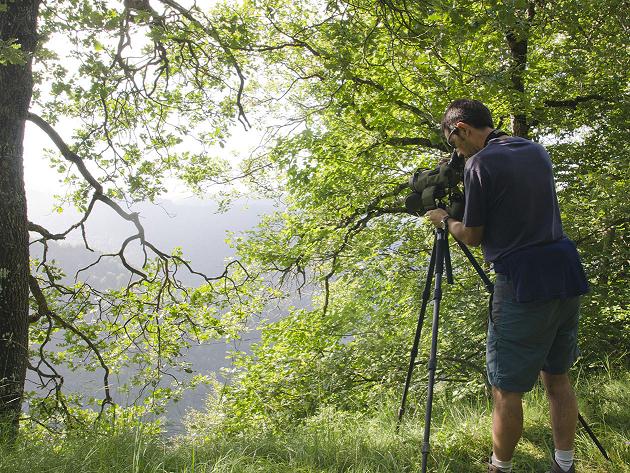
|
|
In
order to study the spread of this species in Catalonia, in 2012 the
Conservation Biology Group of the University of Barcelona and the Grup de Naturalistes d’Osona
(a naturalists’ association) began a cooperate monitoring of the
population of Egyptian Vulture in centre and Eastern Catalonia,
specifically in the counties called Vallès, Bages, Anoia, Osona,
Ripollès and Garrotxa. The main target of this monitoring is to know
the population status in this area, its evolution and the factors
affecting this increase. At the same time, a population viability
analysis will be carried out adding information of other areas such as
the Berguedà and Solsonès counties thanks to collaboration of the
naturalists Pere Aymerich and Joan Santandreu.
Tasks conducted in this study consisted on a census of occupied
territories, obtaining the reproductive taxes and mainly the number of
chicks flown, and ringing the chicks to know their movements and
survival. To face with these tasks, specific protocols where
prepared for the observers consisting on monitoring the territories
since the arrival of the adults in March until the flight of the
chicks. The first monitoring task consisted on detecting the occupied
territories once the adults have already arrived so this enables to
have a census of territorial individuals. After this, reproduction in
these territories was verified, and the number of chicks and the number
of chicks flown were obtained by the observers. When the chicks were
60-days old, they were marked with a with a conventional metallic ring
in one leg, and a red alphanumeric coded band (readable from long
distances) in the other leg. During the ringing fieldwork, some chick
feathers were taken in order to get information on their diet by stable
isotope analyses, the same method used by the Biology Conservation
Group to know about the Bonelli’s Eagle diet.
The first results of this monitoring allowed to detect the same 12
occupied territories each year, where 19 chicks flew of which 17 where
ringed. The TV program El medi ambient by the Catalan Broadcasting
Corporation issued a chapter about this fieldwork that you can see (in
Catalan) clicking here.
All this fieldwork was carried out thanks to the collaboration of
several naturalists such us Pere Ignasi Isern, Joan Fort, Grabiel de
Jesús and Jordi Bermejo, rangers and managers of the Natural Park of
Montserrat managed by the Patronat de la Muntanya de Montserrat, the Sant Llorenç del Munt Natural Park managed by the Diputació de Barcelona, the Consorci dels Espais Naturals del Ripollès, the Natural Park of the Volcanic Area of La Garrotxa, the Cos d'Agents Rurals and particularly the Grup de Suport de Muntanya.
The Biodiversity Service of the Catalan Government also gave support
and authorized the research tasks. Finally, we would also like to thank
the Catalan Ornithological Institute
for giving support to this project. All this is an example of multipart
collaboration that allows synergies to help an endangered species.
|

